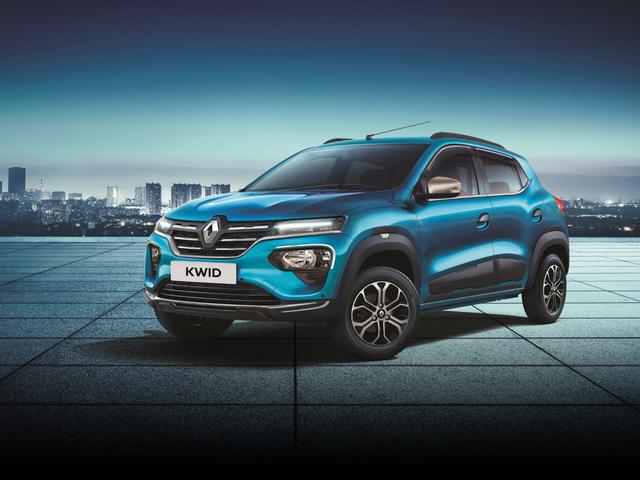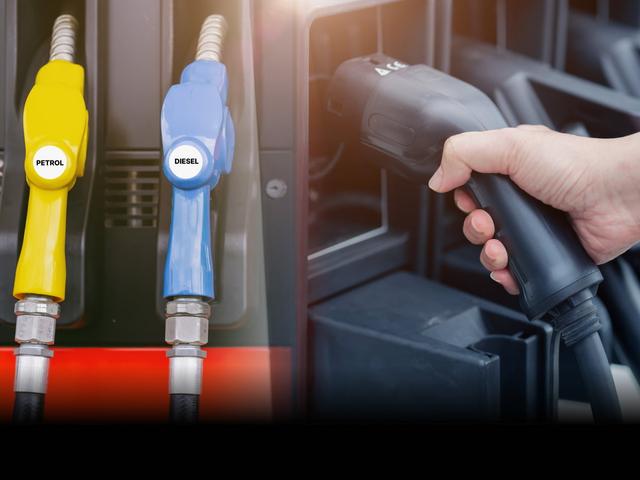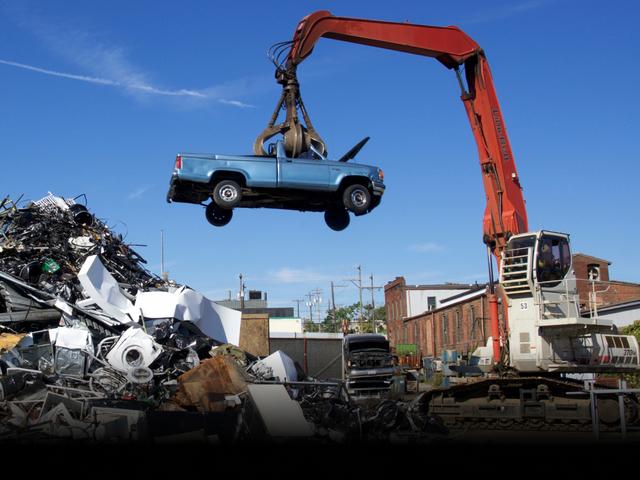


Blink blink !
Its almost here


How to Buy Good Used Cars: Tips for Used Cars Buyers
- 1Determine your needs and budget before choosing a used car
- 2Research the used car market for reliable pricing and options
- 3Inspect the car thoroughly to avoid hidden issues or damage
The benefits of buying a used car over a brand-new one aren’t limited to the money you can save. Although there’s no doubt the savings are substantial, buying used opens up the chances of getting a car that’s also from a higher segment, has a longer list of standard features, and is unlikely to lose its value as quickly. But, to enjoy all the benefits, it’s important that you know how to buy a used car. We have selected a range of tips to buy used cars for beginners, so even if you aren’t the most well-versed with how the second-hand car market operates, you’ll know what to look for and why.
Define Your Needs and Budget
.jpg)
First things first, before you embark on the journey to figuring out how to buy a second-hand car, it’s essential to decide what you really need and want. To keep it simple and the lists straightforward, we are subdividing this segment into a few categories. These will help you tackle the first step of used-car buying quite easily.
What are you looking for in your new used car?
Is it going to be a replacement for an existing everyday car, something you want to learn to drive with, or is it a more fun project that you’ve picked up? The answer to that can be anything and the approach to finding the right used car will vary depending on it. For instance, as a secondary car in the family, if the used car is likely to see only some urban use, it won't matter if it doesn’t have an additional feature like cruise control. If you plan on using it as your primary car, which does a lot of highway driving, you might want to consider used diesel cars, along with features like a height-adjustable seat, and TPMS. Alternatively, for some people, an all-electric car, or even a hybrid, might make more sense.
Which body style will suit you the most?
It’s not a question of style alone but rather practicality and use. Please note that these are just some examples mentioned here, and not the absolute list of what works for every kind of buyer. Someone looking for a car to commute in the city will be better off with a hatchback, while a person with the need to carry more luggage will find compact sedans more useful. Similarly, a larger family will find MPVs the most apt, and those who regularly travel on bad roads will naturally look for SUVs. There can be cars that overlap some segments, but this exercise is more about defining your requirements first. Another thing worth noting here is that while you can choose any car, there are some negatives associated with each of the segments, too. A used hatchback car will not usually be able to provide the maximum cabin space, an SUV might not always be the most fuel efficient car, and a sedan might not be able to clear taller speed breakers as easily as an SUV or even a hatchback. Do keep these points in mind when you decide.
And, most importantly, what’s your budget?
The defining factor in your used car purchase — pretty much as is the case with new cars — is going to be your budget. While it’s good to have an idea of what price bracket you’re looking at, a flexible budget is always beneficial in the case of used cars. That’s largely because you don’t know the exact trim/variant of a particular car until you get out there and check the used-car inventory.
So, for instance, if you were looking at a used Maruti Suzuki Swift on CARS24, you would know that the price of used examples will be in the range of Rs 2.12 lakh to Rs 7.87 lakh. But it won’t be until you decide on the exact car that fits your requirements that you’ll know how much exactly you’ll need to spend.
Research the Market
.jpg)
Understanding the market before you decide to put your hard-earned money into a used car is important. How well a car is currently doing in the market is going to define its value as a used car. A highly popular car, whose demand is more, is going to be more expensive than a car that’s known to be problematic or expensive to run. Another point worth thinking about is the duration for which you think you’re likely to retain this used car. A car with more demand in the used car market will be able to fetch you more money as you sell it back, as compared to something that’s less popular.
As we discussed in our previous feature ‘Things to Check Before Buying a Used Car’, researching the market is a crucial step. And if you’re looking for the answer to how to buy a second-hand car, in-depth research just can’t be skipped. This is also where you’re going to be looking for used cars — you’ll check trusted online platforms like CARS24, visit pre-owned car dealers, and explore other avenues.
While you’ll need to manually go to individual dealers to check their inventory or even take a huge leap of faith to meet a private seller, CARS24 won’t just allow you to check what’s available from the comfort of your home, you’ll also be able to book a test drive orschedule a visit to the nearest CARS24 hub to experience what can quite possibly be your next car.
Inspect the Vehicle
.jpg)
Now that you’ve done your research and selected a number of potential cars to buy, the next step is to get out there and take a closer look at some of these. The best way to buy a second-hand car is to inspect one thoroughly before you finalise it, and inspection starts from the moment you get to know about it.
We’ll come to the car’s past in the next section, but its current condition is crucial for two main reasons: a) it tells you if you’re going to get what you pay for, and b) it gives you an idea if there are any hidden expenses waiting for you soon after you buy the car. Inspecting a car is likely to reveal a lot that’s usually left hidden if you don’t see the car in person. From physical damage, irregular paintwork, uneven tyre wear, or even mismatched parts, there’s a lot that can be found while inspecting the vehicle.
For further peace of mind, you can also opt for CARS24’s pre-delivery inspection, which evaluates the car on over 200 parameters. The inspection can uncover secrets like accidental repairs, water damage, other critical problems, etc. You can also tally these points with the seller’s advertised data to see if you’re being taken for a ride.
Check the Vehicle’s History
.jpg)
Every used car has a history. Some owners are very particular about repairs and maintenance and take good care of their cars. These cars are often garaged, cleaned regularly and kept away from the elements as much as possible. Some are used more often, probably as commuters, tackling urban traffic regularly, with some scuffs and dents being a common occurrence. Depending on their condition, there will be some variation in their value, naturally, but it’s essential that you get an idea of what you’re paying for.
The vehicle’s history unearths — to some extent — the past of a car. The number of registered owners is a strong consideration when buying used. The larger the number, the more the chances of the car being driven in a varied fashion. A single-owner car is more likely to have been driven consistently.
Another vital aspect is the vehicle’s service record. This allows you to know how the previous owner took care of the car. This is also a great way to note what repairs and replacements have been done, and if you’re likely to spend more money in the near future. The added peace of mind aside, a car’s service history is also a good indicator to what a car’s future looks like.
Take a Test Drive
.jpg)
A test drive can make or break a deal. Because while the above-mentioned points are highly crucial, a test drive actually lets you experience the car that you’ve chosen. It gives you the chance to be super vigilant when you get behind the wheel of a potential purchase, to get a better idea of the car’s condition.
In case you’re buying a car that’s still available as a new car, we’d suggest trying out a new example and then coming back to the used car you intend to purchase. This way you’ll know how good or bad it is. Look for signs that indicate a possible mechanical failure — unusual rattles, squeaks, or thuds. Pay close attention to how the steering feels on the move, whether or not the car sways to a particular side. Additionally, check the brakes for excessive noise, the gears for ease of change, and the car’s acceleration ability? These are some of the examples of things to look out for when test-driving a used car.
Where a test drive proves to be absolutely essential is with things that you need to experience to understand. Is the driver’s seat comfortable, does it offer you enough adjustability, if the rear seat’s under-thigh support is as bad as some reviews make it to be. Is the clutch too heavy for everyday use, or is the volume knob too out of reach while driving? These are some of the questions that can only be answered when you get to live with the car, and a test drive makes it possible.
Negotiate the Price
The first step towards buying a used car is to decide on what you want the car for and accordingly allocate a budget for it. Now that you’ve decided on which car you want, quite possibly spoken to the owner/seller to understand what the car has to offer, and also closely inspected it by even taking a test drive, it’s time to finalise the deal. How effective your negotiations on the car’s price will be is very likely based on how good your market research has been.
A slow-selling car, for instance, is going to be valued at much less than a popular car. A car with gaps in its history is going to fetch less money than one with a detailed history. Similarly, a car that’s all original is going to be valued much more than a car that has seen its fair share of repairs. Under usual conditions, a used car that has been used excessively is likely to be offered at a lower price than a car that’s been used sparingly.
You can use some of these points to make the deal better for you The majority of sellers won’t have an issue with some degree of negotiation on the price, because it’s quite likely that they’ve made up their mind to sell the car. And if you present a strong case on why the price ought to be lower than advertised, there’s a good chance you can land yourself a bargain. Unless specifically mentioned that the seller won’t entertain any price negotiations, it’s never a bad idea to give it a try. A point worth mentioning is that you need to draw a line between a good deal and a car that you need to walk away from. Getting that balance wrong can do more harm than good.
Verify Ownership and Complete the Paperwork
.jpg)
You’re now only a step away from owning the used car you’ve eyed for a long time, but verifying the car’s ownership is as important as all the other points put together. From basics like double-checking what’s on the car’s registration certificate to using a dedicated service to finding out if the documents are legitimate. You should also enquire about the car’s loan status, and any unpaid traffic fines, among other things, all of which if left hidden can make the ownership problematic.
When you buy a used car, the car needs to be transferred to your name. If you’re to transfer the car to a different state, it requires payment of road tax in that state, a no-objection certificate from the original RTO, and re-registration in the new state.
Beware of Scams
One of the biggest reasons why buyers are apprehensive about buying used cars is the possibility of getting scammed. The chances are higher in the case of used cars as compared to the purchase of a new car. This is not to take away confidence from you but rather to make you aware of possible scams and devise a way to have a clean purchase.
The greed to sell their car at a higher price than the market average drives some dealers/sellers to hide a car’s age, condition, or mileage. A thorough inspection is usually enough to find out if a car is older than advertised — or in a worse condition. Illegal modifications can land you in great trouble, so be wary of those, too. A common occurrence these days is facelifting older cars to make them appear like the newer model. This is done with kits of usually inferior quality (in comparison to the original) and you can’t verify the workmanship, either. It won’t be a bad idea to walk away from these.
It’s difficult to verify how many people have used the car, despite how small the number of owners is on paper. In such cases, to save yourself from being scammed into buying a bad example, you must look at other parameters, too. Like originality, history, and the overall condition.
Post-Purchase Tips
The biggest misconception about buying used is that you’ll spend more time in the garage rectifying the car rather than enjoying it. That is absolutely untrue, but to ensure your ownership journey is smooth and hassle-free, we would suggest a few quick pointers.
The first on the list is getting a quick checkup from an authorised dealer or a trustworthy mechanic. A service will ready up the car for its second innings, and will also rectify any minor faults. If you’ve negotiated on the basis of pending tyres and battery change, it’s going to be a good time to get those replacements done, too.
As you begin to use the car, familiarise yourself with the controls and features. All cars are supplied with an owner’s manual, keep that handy. Also, while nearly all dealers and services will give you a thoroughly cleaned car, you can use this opportunity to have the interior deep-cleaned and the exterior detailed. Depending on the condition, you can also get some form of paint protection carried out for the exterior. This will incur some extra cost but it’ll help preserve the car’s appearance in the long run.
Conclusion
Buying a car — new or old — is a moment worth cherishing. As we mentioned previously, buying used is definitely more sensible for a variety of reasons, and following the above-mentioned pointers on how to buy a second-hand car, you can have the proverbial cake and eat it, too.
Frequently Asked Questions
Expand all

Blink blink !
Its almost here

















.jpg&w=640&q=75)





Blink blink !
Its almost here

-Explained-_-Decoding-Bharat-Stage-7_-What-It-Means-for-India-and-You.jpg&w=828&q=75)









